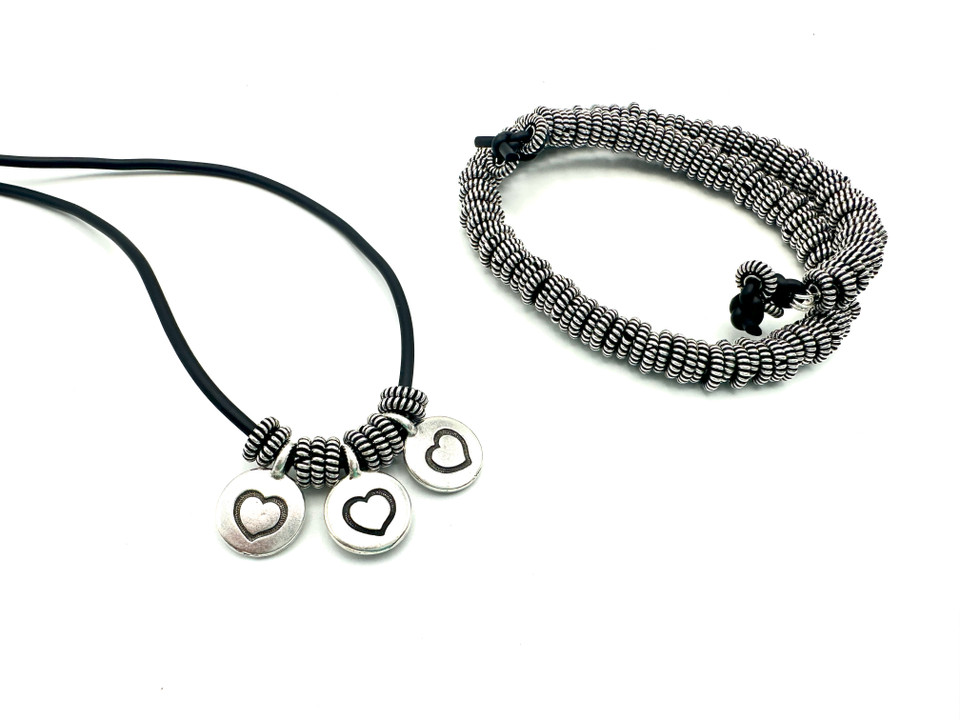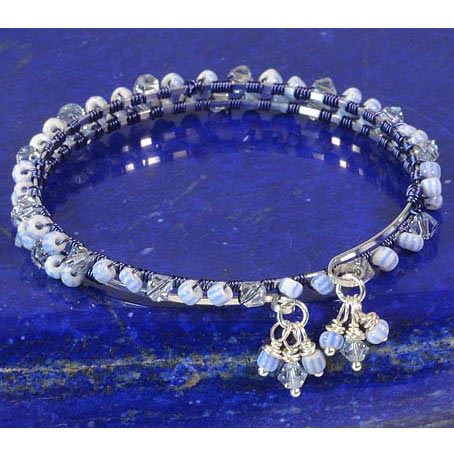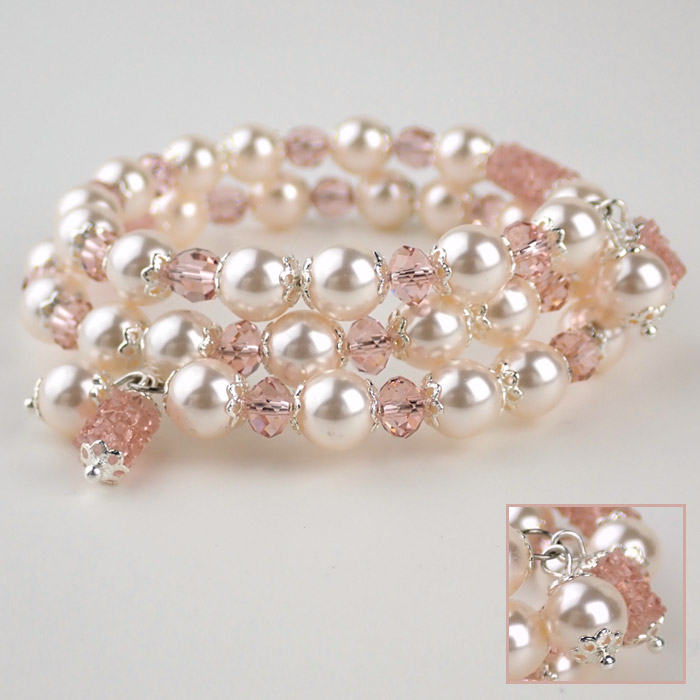Rings & Things Jewelry Blog
Rubber Tubing Necklace and Memory Wire Bracelet Set
Designed by: Guest Designer Deb Floros
Suggested Supplies
1 #61-622-02 2mm Rubber Cord, Bulk, for Jewelry , 10 meters - Black (33 Feet)
1 #26-815-117 Silver Plated Metal Beads, Spacer, Coil (strand)
3 #49-958-48-AS TierraCast Antiqued Silver Plated Offset Heart Charm (Each)
1 #61-407-17-3 22ga Beadalon Memory Wire Coil, Oval Bracelet - Silver Plated Carbon Steel (Each)
Tools
Scissors
Chain Nose Pliers
Memory Wire Cutter
Memory Wire Finishing Pliers
Designer Tips
New to j
…
Mar 21st 2025
Blue Pin Stripe Lashed Memory Wire Bracelet Tutorial
This project uses durable, springy memory wire as the base, and 26-gauge dark blue Artistic Wire as an accent. Created by: Amy MickelsonDesigner TipsUse heavy-duty cutters to cut memory wire.Lashing the beads onto the memory from the center outward allows you to keep half of the wire needed on the spool, making the wire wrapping easier to manage.You will need a total of 72-84" to wrap the beads onto the wire.Unroll approximately 36-42" wire from spool but do not cut it. Put the cover back on spo
…
Dec 1st 2021
Wire Jewelry 101
Jewelry making wire gives you endless choices in creativity! Still, it's easier to get started once you know a few basic tips and terms that will help you determine what type of wire to use for your jewelry projects. Learn about different shapes, gauges, and materials of craft wire.Find full tutorials, jewelry projects, and supplies too.Wire GaugesThe gauge of a piece of wire is a measurement of its width (diameter). Gauge is often abbreviated as "ga", thus 20 gauge = 20ga. There are two main ga
…
Oct 18th 2021
Blushing Bride Bracelet Tutorial
Delicate-looking filigree bead caps give this memory-wire bracelet the crowning touch. Created by: Rita Hutchinson Designer TipsAdd bead caps to each end of (2) 8mm fine rocks tubes and string each on a headpin; trim and loop. For step-by-step looping instructions, see Jewelry Basics 101 (PDF).Add bead caps to each side of (2) crystal pearls and string each on a headpin; trim and loop.Lay out desired pattern on bead mat. The pattern here adds bead caps to each crystal pearl and to the
…
Aug 31st 2021
Twilight Tide Pool Bracelet Tutorial
Created by: Polly Nobbs-LaRueDesigner Tips Memory wire is steel, and unkind to most jewelry tools. Use heavy-duty flush cutters to cut the desired length: Most memory wire bracelets are 3-5 coils. The design pictured is about 3.5 coils. Tip: Flush cutters cut the wire flat, rather than pointed, so you don't have to file the end flat (flush).Use memory-wire bending pliers (or other strong round-nose pliers) to make a loop at one end of the wire. Close the loop tightly, or the triangle beads will
…
Jan 1st 2021
BeDazzled Slinky Bracelet Tutorial
Created by: Sondra BarringtonDesigner TipsUse 7 coils of anklet size to make this bracelet bangle. You can adjust the size of wire and numbers of coils any way you wish.Do not use your favorite jewelry cutter on memory wire. (Use a heavy duty cutter rated for steel wire.)This free-form design features the beads listed, in a randomly appealing manner. Add as many or as few beads as you would like to create your own custom bangle.A loop at each end keeps the beads on the wire and provides a nice w
…
Jan 1st 2021
Satsuma Surprise Bracelet Tutorial
Designer TipsUsing alcohol wipes, clean all the settings and set aside to dry.Using one flatback stone, glue into one setting and set aside for 24 hours to dry. Repeat 5 more times.Using one jump ring, attach to one setting. Repeat 5 more times and set aside. For best way to open and close loops, see Jump Ring Hint in Jewelry Basics 101 (PDF).Using memory wire, make a double loop at one end. Memory wire is very tough -- we recommend using heavy-duty cutters and memory wire pliers, to avoid damag
…
Feb 1st 2020
Silver Sea Urchin Bracelet Tutorial
Created by: Polly Nobbs-LaRue Designer Tips Memory wire is steel, and unkind to most jewelry tools.Use heavy-duty flush cutters to cut the desired length: Most memory wire bracelets are 3-5 coils. The design pictured is about 3.5 coils. Tip: Flush cutters cut the wire flat, rather than pointed, so you don't have to file the end flat (flush).Use memory-wire bending pliers (or other strong round-nose pliers) to make a loop at one end of the wire. String a bit more than one full coil
…
Feb 1st 2016








